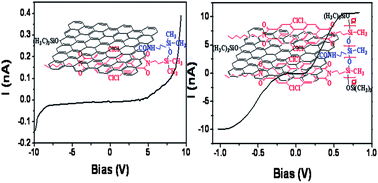Tetrachloroperylene diimide functionalized reduced graphene oxide sheets and their I–V behavior by current sensing atomic force microscopy†
Abstract
Reduced graphene

* Corresponding authors
a
State Key Laboratory of Chemical Resource Engineering, Beijing University of Chemical Technology, Beijing, China
E-mail:
skyan@mail.buct.edu.cn
Fax: +86 1064455928
Tel: +86 1064455928
b
Key Laboratory of Rubber-plastics, Ministry of Education, Qingdao University of Science and Technology, Qingdao, People's Republic of China
E-mail:
zjm@qust.edu.cn
Reduced graphene

 Please wait while we load your content...
Something went wrong. Try again?
Please wait while we load your content...
Something went wrong. Try again?
Z. Ren, D. Sun, J. Zhang and S. Yan, J. Mater. Chem., 2012, 22, 18839 DOI: 10.1039/C2JM34379G
To request permission to reproduce material from this article, please go to the Copyright Clearance Center request page.
If you are an author contributing to an RSC publication, you do not need to request permission provided correct acknowledgement is given.
If you are the author of this article, you do not need to request permission to reproduce figures and diagrams provided correct acknowledgement is given. If you want to reproduce the whole article in a third-party publication (excluding your thesis/dissertation for which permission is not required) please go to the Copyright Clearance Center request page.
Read more about how to correctly acknowledge RSC content.
 Fetching data from CrossRef.
Fetching data from CrossRef.
This may take some time to load.
Loading related content
